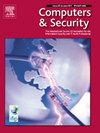CyberShapley: Explanation, prioritization, and triage of cybersecurity alerts using informative graph representation
IF 4.8
2区 计算机科学
Q1 COMPUTER SCIENCE, INFORMATION SYSTEMS
引用次数: 0
Abstract
In recent years, the field of cybersecurity has seen significant advancements in the ability to detect anomalies and cyberattacks. This progress can be attributed to the use of deep learning (DL) models. Despite their superior performance, such models are imperfect, and their complex architecture makes them opaque and uninterpretable. Therefore, security analysts cannot effectively analyze the alerts generated by these models. Recently proposed methods that provide an explanation for the predictions of DL-based anomaly detectors tend to focus on the models’ low-level input features which necessitate further analysis to understand the alerts. As a result, when triaging alerts, security analysts spend a great deal of time analyzing the alerts before making a decision whether and how to act. To address this issue and ensure that the explanations produced for DL models’ output are beneficial to security analysts, we propose CyberShapley, an XAI approach that aims to enhance the interpretability of alerts generated by anomaly detectors by providing user-friendly explanations for the decisions made by these models. We evaluated our method on an LSTM-based anomaly detection model that raises alerts on the anomalous event sequences in the DARPA Engagement #3 and PublicArena datasets. Our method explains the anomalous event sequences associated with alerts by visualizing them as human-interpretable subgraphs (i.e., connected components) and highlighting (prioritizing) the most important components. Consequently, analysts can easily triage the event sequences by focusing on the components with high importance while disregarding the components with low importance.
求助全文
约1分钟内获得全文
求助全文
来源期刊

Computers & Security
工程技术-计算机:信息系统
CiteScore
12.40
自引率
7.10%
发文量
365
审稿时长
10.7 months
期刊介绍:
Computers & Security is the most respected technical journal in the IT security field. With its high-profile editorial board and informative regular features and columns, the journal is essential reading for IT security professionals around the world.
Computers & Security provides you with a unique blend of leading edge research and sound practical management advice. It is aimed at the professional involved with computer security, audit, control and data integrity in all sectors - industry, commerce and academia. Recognized worldwide as THE primary source of reference for applied research and technical expertise it is your first step to fully secure systems.
 求助内容:
求助内容: 应助结果提醒方式:
应助结果提醒方式:


